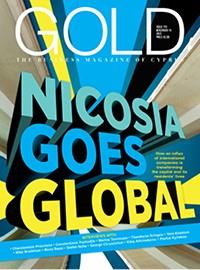The work done with the Atacama Large Millimeter/submillimeter Array (ALMA) telescope in Chile solidifies the theory that comets were not just passive wanderers but active agents in making Earth habitable, President of the Cyprus Space Exploration Organisation (CSEO) George Danos has said.
Danos was invited by CNA to comment on the discovery announced recently by an international team of scientists that shows water in Halley-type comet, 12P/Pons-Brooks, matches Earth’s oceans, strengthening the theory that comets helped make our planet habitable.
"This is a profound discovery that speaks to one of the most fundamental questions of our existence: Where did we come from? For the first time, we have powerful evidence that the water in our oceans, and by extension, in our own bodies, shares a direct chemical fingerprint with a visitor from the depths of our solar system," Danos stressed.
He said that the work done with the ALMA telescope, "solidifies the theory that comets, these ancient icy relics, were not just passive wanderers but active agents in making Earth habitable."
At the Cyprus Space Exploration Organisation, Danos said, "results like this reinforce our mission to explore, to understand our place in the universe, and to inspire the next generation to look up and wonder."
"This landmark result from the ALMA observatory is a huge leap forward in planetary science," he pointed out.
Danos told CNA that the long-standing debate over the origin of Earth’s water has been missing a key piece of evidence, and the matching isotopic ratio in comet 12P/Pons-Brooks provides exactly that.
It's a testament, he said, to the power of international scientific collaboration and cutting-edge technology.
For astrobiology, he continued, the implications "are immense."
If Halley-type comets, he explained, are effective delivery systems for Earth-like water, "it significantly increases the probability that other rocky planets throughout the galaxy could also receive these essential ingredients for life."
(Source: CNA)









